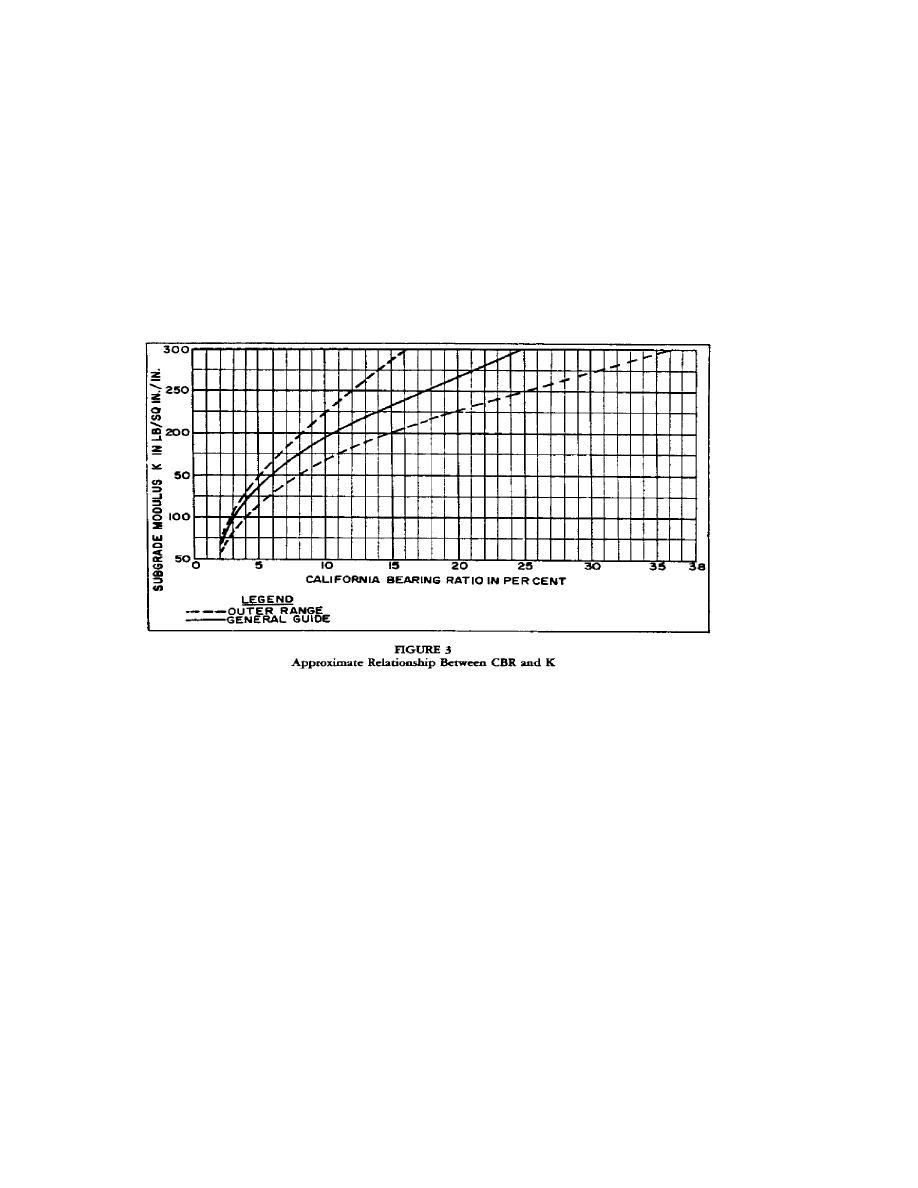
d. Subgrade Modulus. The modulus of subgrade reaction (K) is the unit
load per inch of deflection on a 30-inch-diameter rigid steel plate. Determine
the subgrade modulus when designing rigid pavements. Use the test procedure
given in ASTM D1196 and compute the K value at the unit load corresponding to
.05 inches deflection. For an estimation of K from CBR test results, see the
relationship given by Figure 3.
e. Frost Susceptibility. As a general rule, inorganic soils containing
greater than 3 percent by weight finer than .02 millimeters are frost
susceptible. Where frost-susceptible soils arc encountered in regions of
freezing temperatures, design pavements to limit the depth of frost
penetration into the subgrade. For a specific design procedure, see
Airfield Pavement, NAVFAC DM-21.
7. BORROW MATERIAL. From the developed soil profiles, determine the quality of
material available for fill.
a. Fill Material. Soil types shown in Table 2 are listed in decreasing
order of their value as fill material. Generally, granular soils are the
preferred fill material and should bc used in the top of the subgrade. Avoid
the use of expansive clays and organic soils.
b. Borrow. When borrow is required, locate pits in proximity to the
proposed roadway using soil maps and other forms of exploration. To determine
the suitability and extent of borrow material, conduct borings in a grid
pattern on approximately 100-foot centers. The depth of borings should be 2 to
4 feet below the anticipated depth of borrow.
8


 Previous Page
Previous Page
